-

Jan
13
Interpretive Summary: Assessment of diagnostic accuracy of biomarkers to assess lung consolidation in calves with induced bacterial pneumonia using receiver operating characteristic curves
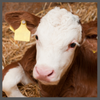
Bovine respiratory disease (BRD) is the most economically significant disease for cattle producers in the United States, affecting 16.2% of cattle on feed.
Read more
-

Jan
13
Interpretive Summary: A time-series effect of phytase supplementation on phosphorus utilization in growing and finishing pigs fed a low-phosphorus diet
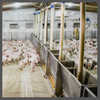
The current study's authors aimed to determine a time-series effect of phytase on phosphorus (P) utilization in growing and finishing pigs. Growth performance, apparent total tract digestibility (ATTD) of nutrients, P excretion, and plasma concentrations of minerals were evaluated during two experiments.
Read more
-

Jan
13
Interpretive Summary: Effects of dietary leucine and tryptophan on serotonin metabolism and growth performance of growing pigs
.png?sfvrsn=63524cd1_0)
Tryptophan is often a limiting amino acid in corn-soybean meal-based diets of pigs and plays a vital role in appetite regulation. However, this mechanism competes with other large neutral AA such as Val, Leu Ile, Tyr, and Phe. Standard corn and sorghum diets fed to pigs are rich in Leu and may reduce pig feed intake and growth performance.
Read more
-

Jan
06
Interpretive Summary: Myersocough beef cowcalf pairs housing drylot
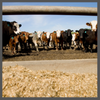
Drylots are becoming a more common method of managing cow/calf pairs because they provide more flexibility for nutritional management, calving monitoring and provide shelter from wind and rain to decrease maintenance nutrition requirements in the winter. However, limited work has focused on the impact of dry-lot cow/calf management on cow/calf behavior and performance around the time of weaning.
Read more
-

Jan
06
Interpretive Summary: Sodium dichloroacetate and glucose supplementation in growing-finishing pigs fed a low-protein diet
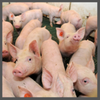
Managing low protein diets in pigs is challenging because reduced dietary protein frequently leads to impaired growth performance and increased intramuscular fat. Supplementation with essential amino acids (particularly lysine, tryptophan, threonine, and methionine) is helpful, however may not fully ameliorate the negative impacts of a low protein diet.
Read more
-

Jan
06
Interpretive Summary: Reproductive performance and longevity in energy restricted gilts
.png?sfvrsn=bb514cd1_0)
Longer reproductive lives are highly sought after in sows because it increases the profitability of commercial farms. Sows that reach their fourth parity and produce large litters are highly desired.
Read more
-

Jan
06
Interpretive Summary: Impacts of intermittent maternofetal oxygenation on IUGR lambs
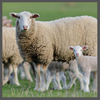
Intrauterine growth restriction (IUGR) caused by placental insufficiency is highly problematic because fetal hypoxemia leads to low birthweight and impaired growth in livestock. Ways to counter the negative impacts of placental insufficiency are therefore necessary to increase the productivity and health of IUGR-born livestock.
Read more
-

Jan
03
Interpretive Summary: Impacts of silymarin on the reproductive performance of sows
.png?sfvrsn=4f564cd1_0)
Silymarin is a flavonolignan extracted from milk thistle fruit and seeds. It has traditionally been used to reduce liver inflammation and toxicity in both humans and animals but may also potentially increase milk production during lactation.
Read more
-

Jan
03
Interpretive Summary: Effects of dietary spray-dried plasma protein on nutrient digestibility and growth performance in nursery pigs

Dietary spray-dried plasma protein (SDPP) is widely used in nursery pig diet due to its high nutrient contents and growth-promoting effects. In the present work, two sources of SDPP were evaluated for energy and amino acid (AA) digestibility and growth performance in nursery pigs.
Read more
-

Dec
27
Study Finds Seaweed Could Reduce Methane Emissions from Livestock

Promising research is being performed at the Institute for Global Food Security (IGFS) at Queen’s University Belfast, feeding seaweed to farm animals. The technique is said to reduce methane by at least 30%.
Read more
-

Dec
27
Industry Groups Provide Comments to FSIS About Cell-Cultured Meat Labeling
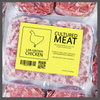
NCBA agrees that the labeling of these products is important. Danielle Beck, Senior Executive Director of Government Affairs, noted a survey where 74% of consumers agreed that there should be a clear indication of whether the meat, they are purchasing is either lab-grown or conventionally produced.
Read more
-

Dec
27
FAO Publishes The State of Food and Agriculture 2021

The Food and Agriculture Organization of the United Nations (FAO) recently published The State of Food and Agriculture 2021. The report comes after the COVID-19 pandemic showed vulnerability within the agrifood system globally.
Read more
-

Dec
27
EPA Releases Report on Environmental Impact of Food Waste

The United States Environmental Protection Agency (EPA) has published From Farm to Kitchen: The Environmental Impacts of U.S. Food Waste, to inform policymakers, researchers, and the public about the environmental impact of food waste. The report includes benefits to reduced food waste as well as knowledge gaps.
Read more
-

Dec
27
Dairy Pricing Opportunity Act Introduced

The bill is designed to direct the United States Department of Agriculture (USDA) to initiate the process of holding Federal Milk Marketing Order (FMMO) hearings within six months to provide an opportunity for producers to have a seat at the table when any potential changes in how Class I milk prices are calculated is discussed.
Read more
-

Dec
27
Cures 2.0 Bill Introduced

“The federal government has shown, time and time again, that when it’s given the resources needed to accomplish the impossible, there’s not much it cannot do,” DeGette and Upton said in a press release. By creating ARPA-H, we will be bringing together some our nation’s greatest minds to help find cures to these devastating diseases.
Read more
-

Dec
27
Bipartisan Request to Hold Mexico Accountable on Biotech Policy

A bipartisan letter from more than 70 members of Congress was sent to President Joe Biden regarding the United States-Mexico-Canada Agreement (USMCA). The letter urges President Biden to pursue a declaration from Mexican President López Obrador that Mexico will follow the biotech provisions established in USMCA.
Read more
-

Dec
27
Bill to Protect Meatpacking Workers Introduced

During the height of the pandemic, it was revealed that over 59,000 meatpacking and processing workers contracted COVID-19, and at least 269 died. PAMWA would provide protections for meatpacking workers along with systemic reforms, such as creating a fair market that allows independent farmers, ranchers, and local food systems to succeed.
Read more
-

Dec
27
APHIS Issues Final Rule Regarding Handling of Animals

The United States Department of Agriculture’s (USDA) Animal and Plant Health Inspection Service (APHIS) has issued a final rule modifying the Animal Welfare Act (AWA) regulations to include a requirement for a contingency plan for the handling of animals during an emergency.
Read more
-

Dec
27
APHIS Announces Funds for Animal Health

The United States Department of Agriculture’s (USDA) Animal and Plant Health Inspection Service (APHIS) recently announced over $16.3 million to 64 different projects with states, universities, and other partners for animal health protection.
Read more
-

Dec
20
Interpretive Summary: Efficient approximation of reliabilities for single-step genomic best linear unbiased predictor models with the Algorithm for Proven and Young

The estimated breeding value (EBV) of an animal measures its genetic merit. For calculating EBVs, pedigree and genomic information are jointly used in a procedure called single-step genomic best linear unbiased prediction (ssGBLUP). Genetic evaluations report each EBV with its reliability, which measures how accurate the breeding value estimation was.
Read more
 JanInterpretive Summary: Assessment of diagnostic accuracy of biomarkers to assess lung consolidation in calves with induced bacterial pneumonia using receiver operating characteristic curves
JanInterpretive Summary: Assessment of diagnostic accuracy of biomarkers to assess lung consolidation in calves with induced bacterial pneumonia using receiver operating characteristic curves Bovine respiratory disease (BRD) is the most economically significant disease for cattle producers in the United States, affecting 16.2% of cattle on feed.
Bovine respiratory disease (BRD) is the most economically significant disease for cattle producers in the United States, affecting 16.2% of cattle on feed. JanInterpretive Summary: A time-series effect of phytase supplementation on phosphorus utilization in growing and finishing pigs fed a low-phosphorus diet
JanInterpretive Summary: A time-series effect of phytase supplementation on phosphorus utilization in growing and finishing pigs fed a low-phosphorus diet The current study's authors aimed to determine a time-series effect of phytase on phosphorus (P) utilization in growing and finishing pigs. Growth performance, apparent total tract digestibility (ATTD) of nutrients, P excretion, and plasma concentrations of minerals were evaluated during two experiments.
The current study's authors aimed to determine a time-series effect of phytase on phosphorus (P) utilization in growing and finishing pigs. Growth performance, apparent total tract digestibility (ATTD) of nutrients, P excretion, and plasma concentrations of minerals were evaluated during two experiments. JanInterpretive Summary: Effects of dietary leucine and tryptophan on serotonin metabolism and growth performance of growing pigs
JanInterpretive Summary: Effects of dietary leucine and tryptophan on serotonin metabolism and growth performance of growing pigs.png?sfvrsn=63524cd1_0) Tryptophan is often a limiting amino acid in corn-soybean meal-based diets of pigs and plays a vital role in appetite regulation. However, this mechanism competes with other large neutral AA such as Val, Leu Ile, Tyr, and Phe. Standard corn and sorghum diets fed to pigs are rich in Leu and may reduce pig feed intake and growth performance.
Tryptophan is often a limiting amino acid in corn-soybean meal-based diets of pigs and plays a vital role in appetite regulation. However, this mechanism competes with other large neutral AA such as Val, Leu Ile, Tyr, and Phe. Standard corn and sorghum diets fed to pigs are rich in Leu and may reduce pig feed intake and growth performance. JanInterpretive Summary: Myersocough beef cowcalf pairs housing drylot
JanInterpretive Summary: Myersocough beef cowcalf pairs housing drylot Drylots are becoming a more common method of managing cow/calf pairs because they provide more flexibility for nutritional management, calving monitoring and provide shelter from wind and rain to decrease maintenance nutrition requirements in the winter. However, limited work has focused on the impact of dry-lot cow/calf management on cow/calf behavior and performance around the time of weaning.
Drylots are becoming a more common method of managing cow/calf pairs because they provide more flexibility for nutritional management, calving monitoring and provide shelter from wind and rain to decrease maintenance nutrition requirements in the winter. However, limited work has focused on the impact of dry-lot cow/calf management on cow/calf behavior and performance around the time of weaning. JanInterpretive Summary: Sodium dichloroacetate and glucose supplementation in growing-finishing pigs fed a low-protein diet
JanInterpretive Summary: Sodium dichloroacetate and glucose supplementation in growing-finishing pigs fed a low-protein diet Managing low protein diets in pigs is challenging because reduced dietary protein frequently leads to impaired growth performance and increased intramuscular fat. Supplementation with essential amino acids (particularly lysine, tryptophan, threonine, and methionine) is helpful, however may not fully ameliorate the negative impacts of a low protein diet.
Managing low protein diets in pigs is challenging because reduced dietary protein frequently leads to impaired growth performance and increased intramuscular fat. Supplementation with essential amino acids (particularly lysine, tryptophan, threonine, and methionine) is helpful, however may not fully ameliorate the negative impacts of a low protein diet. JanInterpretive Summary: Reproductive performance and longevity in energy restricted gilts
JanInterpretive Summary: Reproductive performance and longevity in energy restricted gilts.png?sfvrsn=bb514cd1_0) Longer reproductive lives are highly sought after in sows because it increases the profitability of commercial farms. Sows that reach their fourth parity and produce large litters are highly desired.
Longer reproductive lives are highly sought after in sows because it increases the profitability of commercial farms. Sows that reach their fourth parity and produce large litters are highly desired. JanInterpretive Summary: Impacts of intermittent maternofetal oxygenation on IUGR lambs
JanInterpretive Summary: Impacts of intermittent maternofetal oxygenation on IUGR lambs Intrauterine growth restriction (IUGR) caused by placental insufficiency is highly problematic because fetal hypoxemia leads to low birthweight and impaired growth in livestock. Ways to counter the negative impacts of placental insufficiency are therefore necessary to increase the productivity and health of IUGR-born livestock.
Intrauterine growth restriction (IUGR) caused by placental insufficiency is highly problematic because fetal hypoxemia leads to low birthweight and impaired growth in livestock. Ways to counter the negative impacts of placental insufficiency are therefore necessary to increase the productivity and health of IUGR-born livestock. JanInterpretive Summary: Impacts of silymarin on the reproductive performance of sows
JanInterpretive Summary: Impacts of silymarin on the reproductive performance of sows.png?sfvrsn=4f564cd1_0) Silymarin is a flavonolignan extracted from milk thistle fruit and seeds. It has traditionally been used to reduce liver inflammation and toxicity in both humans and animals but may also potentially increase milk production during lactation.
Silymarin is a flavonolignan extracted from milk thistle fruit and seeds. It has traditionally been used to reduce liver inflammation and toxicity in both humans and animals but may also potentially increase milk production during lactation. JanInterpretive Summary: Effects of dietary spray-dried plasma protein on nutrient digestibility and growth performance in nursery pigs
JanInterpretive Summary: Effects of dietary spray-dried plasma protein on nutrient digestibility and growth performance in nursery pigs Dietary spray-dried plasma protein (SDPP) is widely used in nursery pig diet due to its high nutrient contents and growth-promoting effects. In the present work, two sources of SDPP were evaluated for energy and amino acid (AA) digestibility and growth performance in nursery pigs.
Dietary spray-dried plasma protein (SDPP) is widely used in nursery pig diet due to its high nutrient contents and growth-promoting effects. In the present work, two sources of SDPP were evaluated for energy and amino acid (AA) digestibility and growth performance in nursery pigs. DecStudy Finds Seaweed Could Reduce Methane Emissions from Livestock
DecStudy Finds Seaweed Could Reduce Methane Emissions from Livestock Promising research is being performed at the Institute for Global Food Security (IGFS) at Queen’s University Belfast, feeding seaweed to farm animals. The technique is said to reduce methane by at least 30%.
Promising research is being performed at the Institute for Global Food Security (IGFS) at Queen’s University Belfast, feeding seaweed to farm animals. The technique is said to reduce methane by at least 30%. DecIndustry Groups Provide Comments to FSIS About Cell-Cultured Meat Labeling
DecIndustry Groups Provide Comments to FSIS About Cell-Cultured Meat Labeling NCBA agrees that the labeling of these products is important. Danielle Beck, Senior Executive Director of Government Affairs, noted a survey where 74% of consumers agreed that there should be a clear indication of whether the meat, they are purchasing is either lab-grown or conventionally produced.
NCBA agrees that the labeling of these products is important. Danielle Beck, Senior Executive Director of Government Affairs, noted a survey where 74% of consumers agreed that there should be a clear indication of whether the meat, they are purchasing is either lab-grown or conventionally produced. DecFAO Publishes The State of Food and Agriculture 2021
DecFAO Publishes The State of Food and Agriculture 2021 The Food and Agriculture Organization of the United Nations (FAO) recently published The State of Food and Agriculture 2021. The report comes after the COVID-19 pandemic showed vulnerability within the agrifood system globally.
The Food and Agriculture Organization of the United Nations (FAO) recently published The State of Food and Agriculture 2021. The report comes after the COVID-19 pandemic showed vulnerability within the agrifood system globally. DecEPA Releases Report on Environmental Impact of Food Waste
DecEPA Releases Report on Environmental Impact of Food Waste The United States Environmental Protection Agency (EPA) has published From Farm to Kitchen: The Environmental Impacts of U.S. Food Waste, to inform policymakers, researchers, and the public about the environmental impact of food waste. The report includes benefits to reduced food waste as well as knowledge gaps.
The United States Environmental Protection Agency (EPA) has published From Farm to Kitchen: The Environmental Impacts of U.S. Food Waste, to inform policymakers, researchers, and the public about the environmental impact of food waste. The report includes benefits to reduced food waste as well as knowledge gaps. DecDairy Pricing Opportunity Act Introduced
DecDairy Pricing Opportunity Act Introduced The bill is designed to direct the United States Department of Agriculture (USDA) to initiate the process of holding Federal Milk Marketing Order (FMMO) hearings within six months to provide an opportunity for producers to have a seat at the table when any potential changes in how Class I milk prices are calculated is discussed.
The bill is designed to direct the United States Department of Agriculture (USDA) to initiate the process of holding Federal Milk Marketing Order (FMMO) hearings within six months to provide an opportunity for producers to have a seat at the table when any potential changes in how Class I milk prices are calculated is discussed. DecCures 2.0 Bill Introduced
DecCures 2.0 Bill Introduced “The federal government has shown, time and time again, that when it’s given the resources needed to accomplish the impossible, there’s not much it cannot do,” DeGette and Upton said in a press release. By creating ARPA-H, we will be bringing together some our nation’s greatest minds to help find cures to these devastating diseases.
“The federal government has shown, time and time again, that when it’s given the resources needed to accomplish the impossible, there’s not much it cannot do,” DeGette and Upton said in a press release. By creating ARPA-H, we will be bringing together some our nation’s greatest minds to help find cures to these devastating diseases. DecBipartisan Request to Hold Mexico Accountable on Biotech Policy
DecBipartisan Request to Hold Mexico Accountable on Biotech Policy A bipartisan letter from more than 70 members of Congress was sent to President Joe Biden regarding the United States-Mexico-Canada Agreement (USMCA). The letter urges President Biden to pursue a declaration from Mexican President López Obrador that Mexico will follow the biotech provisions established in USMCA.
A bipartisan letter from more than 70 members of Congress was sent to President Joe Biden regarding the United States-Mexico-Canada Agreement (USMCA). The letter urges President Biden to pursue a declaration from Mexican President López Obrador that Mexico will follow the biotech provisions established in USMCA. DecBill to Protect Meatpacking Workers Introduced
DecBill to Protect Meatpacking Workers Introduced During the height of the pandemic, it was revealed that over 59,000 meatpacking and processing workers contracted COVID-19, and at least 269 died. PAMWA would provide protections for meatpacking workers along with systemic reforms, such as creating a fair market that allows independent farmers, ranchers, and local food systems to succeed.
During the height of the pandemic, it was revealed that over 59,000 meatpacking and processing workers contracted COVID-19, and at least 269 died. PAMWA would provide protections for meatpacking workers along with systemic reforms, such as creating a fair market that allows independent farmers, ranchers, and local food systems to succeed. DecAPHIS Issues Final Rule Regarding Handling of Animals
DecAPHIS Issues Final Rule Regarding Handling of Animals The United States Department of Agriculture’s (USDA) Animal and Plant Health Inspection Service (APHIS) has issued a final rule modifying the Animal Welfare Act (AWA) regulations to include a requirement for a contingency plan for the handling of animals during an emergency.
The United States Department of Agriculture’s (USDA) Animal and Plant Health Inspection Service (APHIS) has issued a final rule modifying the Animal Welfare Act (AWA) regulations to include a requirement for a contingency plan for the handling of animals during an emergency. DecAPHIS Announces Funds for Animal Health
DecAPHIS Announces Funds for Animal Health The United States Department of Agriculture’s (USDA) Animal and Plant Health Inspection Service (APHIS) recently announced over $16.3 million to 64 different projects with states, universities, and other partners for animal health protection.
The United States Department of Agriculture’s (USDA) Animal and Plant Health Inspection Service (APHIS) recently announced over $16.3 million to 64 different projects with states, universities, and other partners for animal health protection. DecInterpretive Summary: Efficient approximation of reliabilities for single-step genomic best linear unbiased predictor models with the Algorithm for Proven and Young
DecInterpretive Summary: Efficient approximation of reliabilities for single-step genomic best linear unbiased predictor models with the Algorithm for Proven and Young The estimated breeding value (EBV) of an animal measures its genetic merit. For calculating EBVs, pedigree and genomic information are jointly used in a procedure called single-step genomic best linear unbiased prediction (ssGBLUP). Genetic evaluations report each EBV with its reliability, which measures how accurate the breeding value estimation was.
The estimated breeding value (EBV) of an animal measures its genetic merit. For calculating EBVs, pedigree and genomic information are jointly used in a procedure called single-step genomic best linear unbiased prediction (ssGBLUP). Genetic evaluations report each EBV with its reliability, which measures how accurate the breeding value estimation was.



